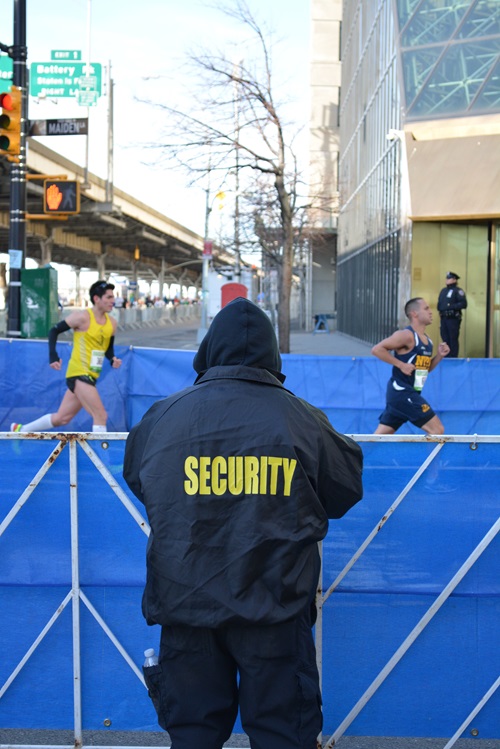
When people get together in large groups, big things happen. The outcome of a gathering can be either good or bad depending on how well it's managed. Sports events are perhaps the most obvious example; with rowdy crowds comes a slew of risks to both event and public safety. Security teams must be equipped and ready to step in whenever necessary. If things get out of hand, their ability to respond quickly and effectively can mean the difference between a minor incident and a major catastrophe.
This article will explore the dynamics of large crowds at sports events, the importance of adapting security strategies to different crowd types, and why clear communication is key to creating conditions for safety, and ultimately, success.
Understanding the Dynamics of Large Crowds at Sports Events
Anyone who has even been to a packed stadium or concert venue knows the palpable energy that permeates the air. The collective excitement, anticipation, and sometimes tension can be felt almost physically. You'll notice the phenomena of emotional contagion, where feelings and actions spread rapidly without conscious thought. Under the right conditions, it can create an incredible sense of unity and shared experience. Under the wrong ones, it has the ability to cause injury and even take lives.
Large venues like sports arenas are very dynamic environments. You have one category of variables, which is the crowd itself and how it reacts to the game being played. Then there are the really uncontrollable variables like weather conditions, unexpected incidents, technical malfunctions, and more -- all of which can drastically alter the mood and behavior of a crowd in seconds.
Imagine a sudden downpour during an outdoor match. The shift in atmosphere is immediate. Fans scramble for cover, pathways become slippery, and visibility decreases. Power outages have a similar effect, where the initial shock quickly gives way to confusion or even panic if not managed properly. To tie back to the concept of emotional contagion, one person's misinterpretation of a loud sound may cause an entire mass of people to believe they're in danger.
Adapting Security Strategies to Different Crowd Types
While the size of a crowd is obviously tied to its potential to get out of hand, many are surprised to learn that different types of crowds can be more prone to specific risks. For instance, a family-oriented crowd at a minor league baseball game will behave differently than a group of die-hard fans at a championship match.
 Understanding these nuances is crucial for event organizers and security teams. They must tailor their approach based on the expected crowd composition, adjusting everything from staffing levels to communication strategies. Their adaptability can make the difference between a smoothly run event and one that spirals out of control.
Understanding these nuances is crucial for event organizers and security teams. They must tailor their approach based on the expected crowd composition, adjusting everything from staffing levels to communication strategies. Their adaptability can make the difference between a smoothly run event and one that spirals out of control.
One common change made for high-stakes events is the adjustment of entry and exit protocols. For events expecting larger or more energetic crowds, staggered entry times and multiple exit points can significantly reduce bottlenecks and the associated risks. Dispersed teams of security personnel can also help maintain order and respond quickly to any issues that arise.
Why Clear Communication Is Crucial to Preventing Crowd-Related Incidents
Pack enough people into a confined space and it isn't a question of if something out of the ordinary will occur, but when. Rapid response has long proven critical to addressing issues before they spread into bigger problems. That's why communication is key in crowd management.
Security teams need to be in constant contact with each other, event organizers, and local authorities. A strong network of communication allows for quick decision-making and coordinated responses to emerging situations - and technology has an increasingly valuable role to play in building them.
It isn't dramatic to state that reliable two-way communication devices can make the difference between life and death. In a scenario where a fire breaks out in a crowded stadium, security teams need to act swiftly and in unison. Simple two-way communication systems allow all team members to receive information simultaneously.
This could trigger a pre-planned evacuation protocol, with each team member knowing their specific role. Some might guide crowds to emergency exits, while others coordinate with first responders. Meanwhile, the central command can use real-time data from remote video surveillance and crowd-monitoring software to identify bottlenecks or areas of concern, redirecting efforts as needed.
Take reliable technology out of the equation and things look very different. Security personnel may be just as confused as the people they're protecting, which may lead different staff to make conflicting and potentially further escalatory decisions as things unfold.
How to Foster Collaborative Communication Between Security Teams and Event Organizers
It's one thing to recognize the importance of strong communication in event management and another to actually have it. Building a culture of open communication starts well before the event day. Regular meetings between security teams and event organizers should be scheduled to exchange ideas, concerns, and strategies. Everyone involved should know who to report to and who has the authority to make critical decisions. Hierarchy prevents confusion while clear lines of responsibility allow for efficient decision-making and rapid response to any situation that may arise.
From earpieces and walkie-talkies to sophisticated command centers with real-time video feeds, security personnel now have an array of tools at their disposal - that is, if their leaders make the right investments ahead of time. Cheaper devices aren't worth the savings if they fail during a critical moment.
Post-Event Analysis: Learning from Communication Successes and Failures
Clear communication isn't a goal - it's a strategy that must be thoughtfully planned and executed. Even after an event ends without incident, the work isn't over. A thorough post-event analysis involving key stakeholders from security personnel to event organizers will reveal crucial insights for future improvements.
Follow-up interviews can be particularly helpful. Were there any instances where miscommunication led to confusion or delays? Did all team members have access to the information they needed when they needed it? Were there any technical issues with communication devices or systems?
Identifying what didn't work, how confident team members felt in their roles and responsibilities, and how effectively information was shared across different teams lessens the chances of redundancies and mistakes happening in the future.
Akin to its importance in many other parts of life, clear communication plays a crucial role in ensuring the success – and security – of large sporting events. The professionals responsible for managing large crowds have a big job on their hands and therefore need the very best preplanning and equipment to keep everyone safe.
Investing in professional-grade communication devices and thorough preplanning may appear unnecessary when you can rely on familiar tools and protocols. However, seizing opportunities becomes challenging once it’s too late.

